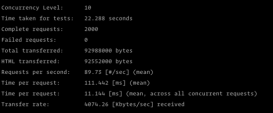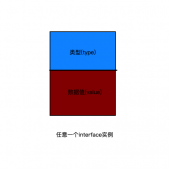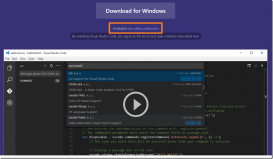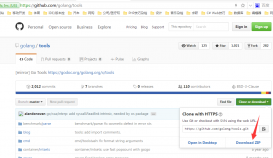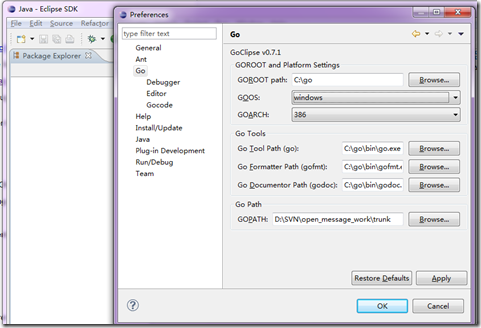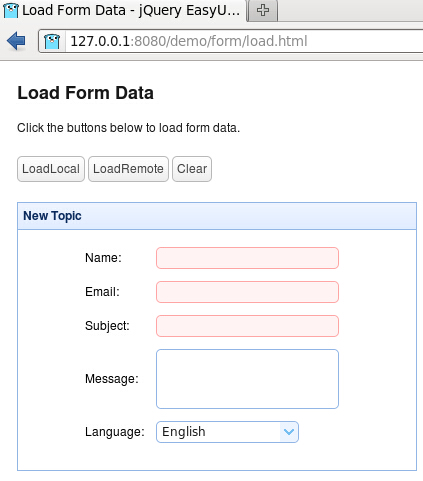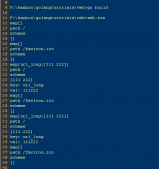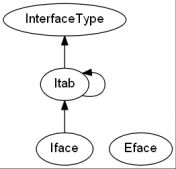前言
先来看一道面试题:
对已经关闭的 chan 进行读写,会怎么样?为什么?
在上一篇学习 Go 协程的文章中,知道 go 关键字可以用来开启一个 goroutine 进行任务处理,但多个任务之间如果需要通信,就需要用到通道(channel)了。
一、Channel的定义
声明并初始化一个通道,可以使用 Go 语言的内建函数 make,同时指定该通道类型的元素类型,下面声明了一个 chan int 类型的 channel:
|
1
|
ch := make(chan int) |
二、Channel的操作
发送(写):发送操作包括了“复制元素值”和“放置副本到通道内部”这两个步骤。即:进入通道的并不是操作符右边的那个元素值,而是它的副本。
|
1
2
3
4
|
ch := make(chan int)// write to channelch <- x |
接收(读):接收操作包含了“复制通道内的元素值”、“放置副本到接收方”、“删掉原值”三个步骤。
|
1
2
3
4
5
6
7
|
ch := make(chan int)// read from channelx <- ch// another way to readx = <- ch |
关闭:关闭 channel 会产生一个广播机制,所有向 channel 读取消息的 goroutine 都会收到消息。
|
1
2
3
|
ch := make(chan int)close(ch) |
从一个已关闭的 channel 中读取消息永远不会阻塞,并且会返回一个为 false 的 ok-idiom,可以用它来判断 channel 是否关闭:
|
1
|
v, ok := <-ch |
如果 ok 是false,表明接收的 v 是产生的零值,这个 channel 被关闭了或者为空。
三、Channel发送和接收操作的特点
- 一个通道相当于一个先进先出(FIFO)的队列:也就是说,通道中的各个元素值都是严格地按照发送的顺序排列的,先被发送通道的元素值一定会先被接收。
- 对于同一个通道,发送操作之间和接收操作之间是互斥的:同一时刻,对同一通道发送多个元素,直到这个元素值被完全复制进该通道之后,其他针对该通道的发送操作才可能被执行。接收也是如此。
- 发送操作和接收操作中,对元素值的处理是不可分割的:前面我们知道发送一个值到通道,是先复制值,再将该副本移动到通道内部,“不可分割”指的是发送操作要么还没复制元素值,要么已经复制完毕,绝不会出现只复制了一部分的情况。接收也是同理,在准备好元素值的副本之后,一定会删除掉通道中的原值,绝不会出现通道中仍有残留的情况。
- 发送操作和接收操作在完全完成之前会被阻塞:发送操作包括了“复制元素值”和“放置副本到通道内部”这两个步骤。在这两个步骤完全完成之前,发起这个发送操作的那句代码会一直阻塞在那里,在它之后的代码不会有执行的机会,直到阻塞解除。
四、Channel的类型
channel 分为不带缓存的 channel 和带缓存的 channel。
使用 make 声明一个通道类型变量时,除了指定通道的元素类型,还可以指定通道的容量,也就是通道最多可以缓存多少个元素值,当容量为 0 时,该通道为非缓冲通道,当容量大于 0 时,该通道为带有缓冲的通道。
|
1
2
|
ch := make(chan int) //无缓冲的channelch := make(chan int, 3) //带缓冲的channel |
非缓冲通道和缓冲通道有着不同的数据传递方式:
- 非缓冲通道:无论是发送操作还是接收操作,一开始执行就会被阻塞,直到配对的操作也开始执行,才会继续传递。即:只有收发双方对接上了,数据才会被传递。数据直接从发送方复制到接收方。非缓冲通道传递数据的方式是同步的。
- 缓冲通道:如果通道已满,对它的所有发送操作都会被阻塞,直到通道中有元素值被接收走。反之,如果通道已空,那么对它的所有接收操作都会被阻塞,直到通道中有新的元素值出现。元素值会先从发送方复制到缓冲通道,之后再由缓冲通道复制给接收方。缓冲通道传递数据的方式是异步的。
五、Channel的源码学习
Channel 的主要实现在 src/runtime/chan.go 中,go 版本为 go version go1.14.6 darwin/amd64这里主要看 chansend 如何实现的。
|
1
2
3
4
5
6
7
8
9
10
11
12
13
14
15
16
17
18
19
20
21
22
23
24
25
26
27
28
29
30
31
32
33
34
35
36
37
38
39
40
41
42
43
44
45
46
47
48
49
50
51
52
53
54
55
56
57
58
59
60
61
62
63
64
65
66
67
68
69
70
71
72
73
74
75
76
77
78
79
80
81
82
83
84
85
86
87
88
89
90
91
92
93
94
95
96
97
98
99
100
101
102
103
104
105
106
107
108
109
110
111
112
113
114
115
116
117
118
119
120
121
|
func chansend(c *hchan, ep unsafe.Pointer, block bool, callerpc uintptr) bool { if c == nil { if !block { return false } gopark(nil, nil, waitReasonChanSendNilChan, traceEvGoStop, 2) throw("unreachable") } if debugChan { print("chansend: chan=", c, "\n") } if raceenabled { racereadpc(c.raceaddr(), callerpc, funcPC(chansend)) } // Fast path: check for failed non-blocking operation without acquiring the lock. // // After observing that the channel is not closed, we observe that the channel is // not ready for sending. Each of these observations is a single word-sized read // (first c.closed and second c.recvq.first or c.qcount depending on kind of channel). // Because a closed channel cannot transition from 'ready for sending' to // 'not ready for sending', even if the channel is closed between the two observations, // they imply a moment between the two when the channel was both not yet closed // and not ready for sending. We behave as if we observed the channel at that moment, // and report that the send cannot proceed. // // It is okay if the reads are reordered here: if we observe that the channel is not // ready for sending and then observe that it is not closed, that implies that the // channel wasn't closed during the first observation. if !block && c.closed == 0 && ((c.dataqsiz == 0 && c.recvq.first == nil) || (c.dataqsiz > 0 && c.qcount == c.dataqsiz)) { return false } var t0 int64 if blockprofilerate > 0 { t0 = cputicks() } lock(&c.lock) if c.closed != 0 { unlock(&c.lock) panic(plainError("send on closed channel")) } if sg := c.recvq.dequeue(); sg != nil { // Found a waiting receiver. We pass the value we want to send // directly to the receiver, bypassing the channel buffer (if any). send(c, sg, ep, func() { unlock(&c.lock) }, 3) return true } if c.qcount < c.dataqsiz { // Space is available in the channel buffer. Enqueue the element to send. qp := chanbuf(c, c.sendx) if raceenabled { raceacquire(qp) racerelease(qp) } typedmemmove(c.elemtype, qp, ep) c.sendx++ if c.sendx == c.dataqsiz { c.sendx = 0 } c.qcount++ unlock(&c.lock) return true } if !block { unlock(&c.lock) return false } // Block on the channel. Some receiver will complete our operation for us. gp := getg() mysg := acquireSudog() mysg.releasetime = 0 if t0 != 0 { mysg.releasetime = -1 } // No stack splits between assigning elem and enqueuing mysg // on gp.waiting where copystack can find it. mysg.elem = ep mysg.waitlink = nil mysg.g = gp mysg.isSelect = false mysg.c = c gp.waiting = mysg gp.param = nil c.sendq.enqueue(mysg) gopark(chanparkcommit, unsafe.Pointer(&c.lock), waitReasonChanSend, traceEvGoBlockSend, 2) // Ensure the value being sent is kept alive until the // receiver copies it out. The sudog has a pointer to the // stack object, but sudogs aren't considered as roots of the // stack tracer. KeepAlive(ep) // someone woke us up. if mysg != gp.waiting { throw("G waiting list is corrupted") } gp.waiting = nil gp.activeStackChans = false if gp.param == nil { if c.closed == 0 { throw("chansend: spurious wakeup") } panic(plainError("send on closed channel")) } gp.param = nil if mysg.releasetime > 0 { blockevent(mysg.releasetime-t0, 2) } mysg.c = nil releaseSudog(mysg) return true} |
从代码中可以看到:
- 有 goroutine 阻塞在 channel recv 队列上,此时缓存队列为空,直接将消息发送给 reciever goroutine,只产生一次复制。
- 当 channel 缓存队列有剩余空间时,将数据放到队列里,等待接收,接收后总共产生两次复制。
- 当 channel 缓存队列已满时,将当前 goroutine 加入 send 队列并阻塞。
所以,开头的面试题就有了答案:
读:
读已经关闭的 chan,能一直读到内容,但是读到的内容根据通道内关闭前是否有元素而不同。
如果 chan 关闭前,buffer 内有元素还未读,会正确读到 chan 内的值,且返回的第二个 bool 值为 true;
如果 chan 关闭前,buffer 内有元素已经被读完,chan 内无值,返回 channel 元素的零值,第二个 bool 值为 false。
写:
写已经关闭的 chan 会 panic。
总结
到此这篇关于Go中Channel发送和接收操作的文章就介绍到这了,更多相关Go Channel发送和接收内容请搜索服务器之家以前的文章或继续浏览下面的相关文章希望大家以后多多支持服务器之家!
原文链接:https://www.cnblogs.com/sunshineliulu/p/15178399.html



